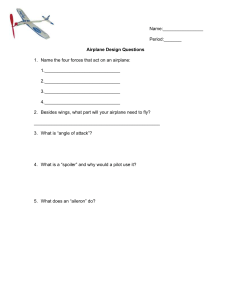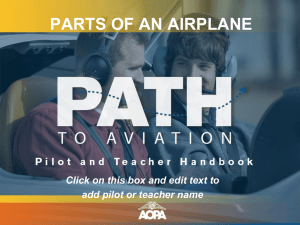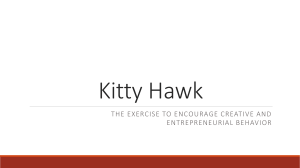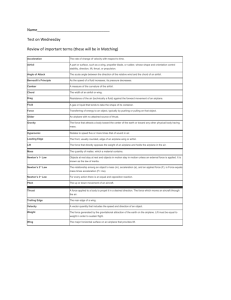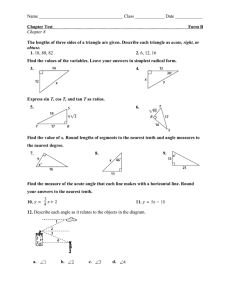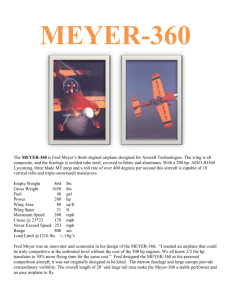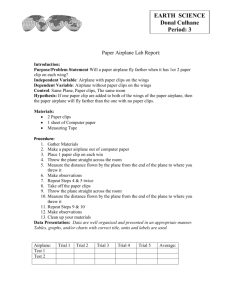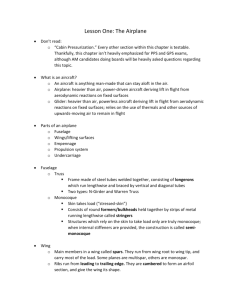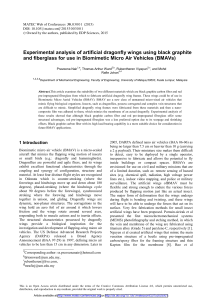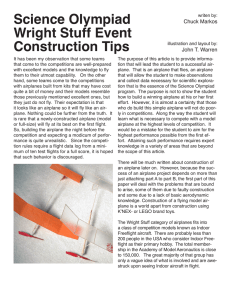Aerospace Engineering Homework: Design & Aerodynamics
advertisement
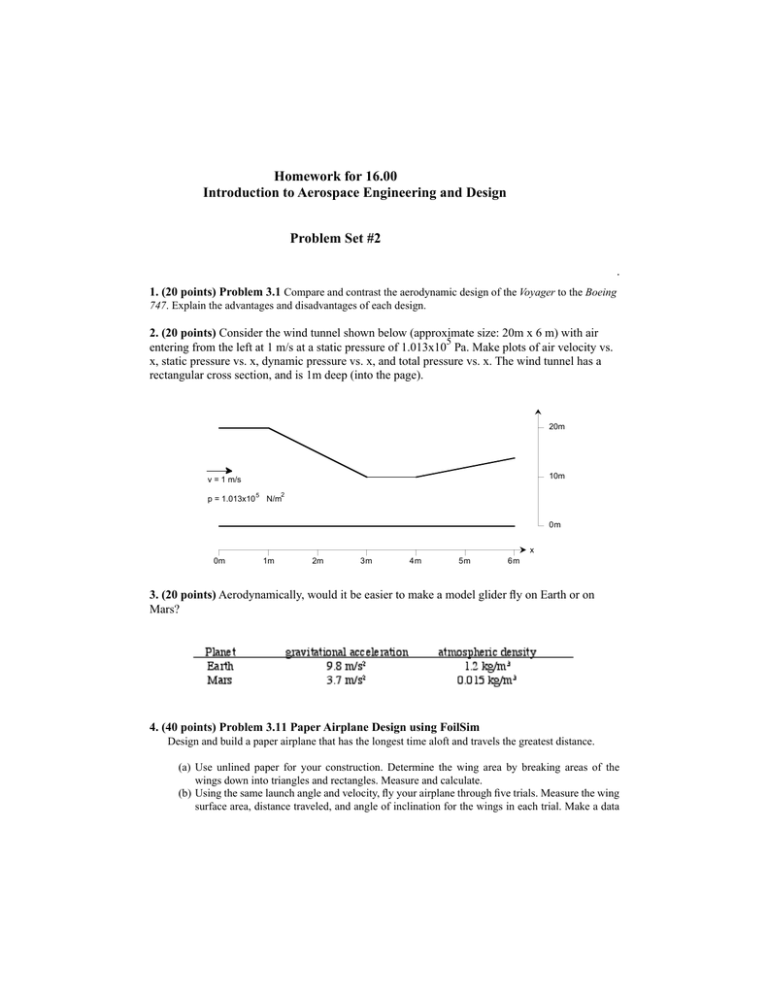
Homework for 16.00 Introduction to Aerospace Engineering and Design Problem Set #2 . 1. (20 points) Problem 3.1 Compare and contrast the aerodynamic design of the Voyager to the Boeing 747. Explain the advantages and disadvantages of each design. 2. (20 points) Consider the wind tunnel shown below (approximate size: 20m x 6 m) with air 5 entering from the left at 1 m/s at a static pressure of 1.013x10 Pa. Make plots of air velocity vs. x, static pressure vs. x, dynamic pressure vs. x, and total pressure vs. x. The wind tunnel has a rectangular cross section, and is 1m deep (into the page). 20m 10m v = 1 m/s 2 p = 1.013x10 5 N/m 0m x 0m 1m 2m 3m 4m 5m 6m 3. (20 points) Aerodynamically, would it be easier to make a model glider fly on Earth or on Mars? 4. (40 points) Problem 3.11 Paper Airplane Design using FoilSim Design and build a paper airplane that has the longest time aloft and travels the greatest distance. (a) Use unlined paper for your construction. Determine the wing area by breaking areas of the wings down into triangles and rectangles. Measure and calculate. (b) Using the same launch angle and velocity, fly your airplane through five trials. Measure the wing surface area, distance traveled, and angle of inclination for the wings in each trial. Make a data table and record your results. Repeat the trial flights for time aloft. Again, record the wing surface area, time aloft, and angle of inclination for the wings in each trial. Graph the area/time or area/distance data for each set of trials. The trial flights must be completed indoors to eliminate wind effects. Write a summary of your results. (c) Cut one inch off the trailing edge of the wings. Place the cut off pieces within the folds of the airplane so the mass remains constant. Repeat the trial flights, data collection, graphing, and written summary as above. (d) Bring your paper airplanes to class for an in-class ‘fly-off’ competition.
